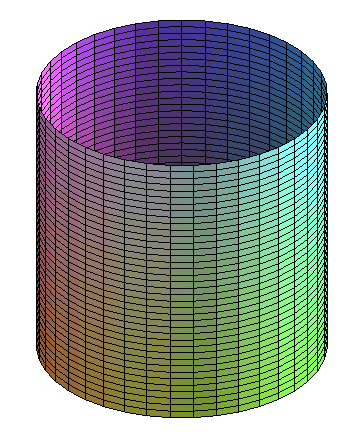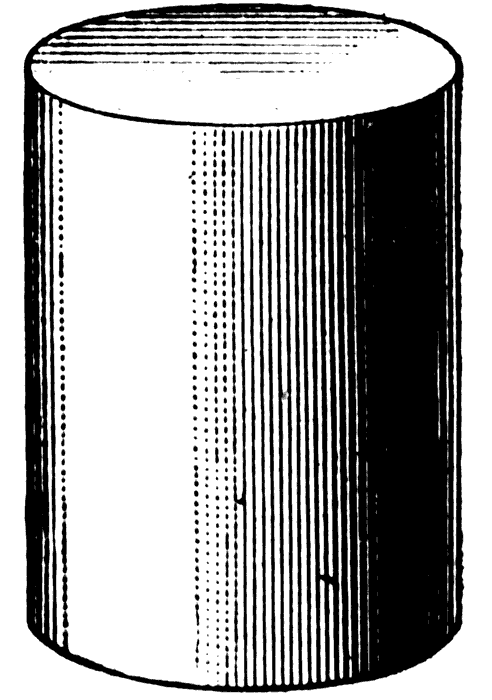 |
American Literature: Romanticism research assignment Student Research Submissions 2015 |
 |
Marichia Wyatt-Jones
Dreaming, Hallucinating, or the Devil Himself:
How
Do We Teach the Ambiguous “Young Goodman Brown?”
Nathaniel Hawthorne’s “Young Goodman Brown” is by far the most interesting
textual experience I have had in this class due to the lack of certainty one
feels after reading it. Considering
the fact that this text is one of the most anthologized pieces in the study of
Romanticism, how do we handle the lack of totality presented in the ending?
Did Goodman Brown dream the entire thing, or was he allowed access to the
real world that is primarily evil? Was
the Devil really walking beside him and his old teacher really a witch?
Does it even matter if it was a dream when the consequences of the
journey affected him all the same?
These questions have been asked for the last one hundred and eighty years and
there are still no definitive answers.
While I believe the level of ambiguity in the ending is what makes this
story great, it seems that it would be an incredibly difficult text to approach
from a teaching perspective.
Because of this difficulty, I thought it would be a good idea to look closely at
some of the scholarship over these questions in order to get a better
understanding of each side of the argument.
By using UHCL’s wonderful digital library, I came up with several
insightful articles which helped me gain a better grasp on each approach to this
question which will be helpful in
my attempt to teach this story in the
future.
“Ambiguity and Clarity in Hawthorne’s ‘Young Goodman Brown’”
Article by Richard H. Fogle
I started with Richard H. Fogle because the abstract suggested he did not believe the answers to these questions matter, and he presents the ambiguity as a positive plot device. Fogle maintains throughout his paper that the “device of multiple choice, or ambiguity, is the very essence of Hawthorne’s tale” (449). Fogle believes that this is evident because “nowhere [in the story] does he permit us a simple meaning, a merely single interpretation” (449). While Fogle agrees with me that this story “is generally felt to be one of Hawthorne’s more difficult tales, from the ambiguity of the conclusions which may be drawn from it,” it is because of this ambiguity that he affirms that “Hawthorne has achieved that reconciliation of opposites which Coleridge deemed the highest art” (464). While he may not have an answer to whether or not Brown was dreaming, he does have a theory on what the story is trying to convey: “Hawthorne wishes to propose, not flatly that man is primarily evil, but instead the gnawing doubt lest this should indeed by true” (448). I found this answer refreshing, as it seems that most critical analysis of the story tends to portray Hawthorne’s view of humanity as incredibly bleak. Fogle decides that the author does not approach the world as grimly as some may think in the fact that “Hawthorne poses the dangerous question of the relations of Good and Evil in man, but withholds his answer.
Nor does he permit himself to settle whether the events of the night of trial are real or the mere figment of a dream” (449). Fogle leans heavily on the ambiguity in the story as a mechanism that “adds depth and tone to Hawthorne’s thin and delicate fabric” which is all the more genius because “the reader himself must extract it to interpret. Hawthorne the artist refuses to limit himself to a single and doctrinaire conclusion, preceding instead by indirection” (453). In order to prove his point with Hawthorne’s own words, he uses “Hawthorne’s own definition of Romance: it gives him scope ‘so [to] manage his atmospherical medium as to bring out or mellow the lights and deepen and enrich the shadows of the picture’” (453). While I am not sure this actually does “aptly” apply to his thesis, it is nice to know what the author thought of a subject we are currently studying in relation to his story.
To take his assumption even further, Fogle traces the story in a cyclical
pattern and shows his reader that “by this basic structure, the action is
likewise given form by the device of foreshadowing, through which the entire
development of the plot is already implicit in the opening paragraph” (455).
Fogle believes that through foreshadowing and context clues, the reader
should know the theme and contents of the story from the beginning, making the
dream question irrelevant. This is
why he states that “most pervasive in the contrasts in ‘Young Goodman Brown’ is
the consistent discrepancy between appearance and reality. Which helps to
produce its heavy atmosphere of doubts and shadow,” this makes the question one
that cannot be answered (459).
Where some believe that Hawthorne’s own views of the world relate to Brown in
the story, Fogle contends that “Hawthorne does not permit himself to become
identified with his hero. He
displays young Goodman Brown not in and for himself, but always in relation to
the whole situation and set of circumstances” that maintains an “aesthetic
distance from it, while hinting at the ugliness it mercifully covers” (463-4).
This reading is a nice version of how
critics can read Hawthorne’s character which is very applicable to teaching the
story.
I appreciate Fogle’s views on the story and author, and will probably use
this article as a starting off point to teaching “Young Goodman Brown.”
This approach seems like a good way to begin a classroom discussion as
Fogle focuses more on the structure of the story, instead of trying to decide
whether or not Brown was dreaming.
Also, I wholeheartedly agree with him that the ambiguity is what makes this
story stand the test of time as we are still discussing this today.
However, I do not think that the question of whether or not he was
dreaming is irrelevant, so this will simply have to be a starting off point and
cannot cover the whole spectrum of discourse over “Young Goodman Brown.”
“The
Forest of Goodman Brown’s Night: A
reading of Hawthorn’s ‘Young Goodman Brown’”
Article by Reginal Cook
Another great find over these questions in “Young Goodman Brown” is
Reginald Cook’s interpretation of the story.
Cook believes that “Hawthorne focused on the world or moral imagination,”
putting him squarely on the side with other critics who believe Goodman Brown
was in fact dreaming. While Cook
believes that the “beginning and the end of the tale are real enough,” he
interprets the middle as sleepwalking (474).
Cook states that this dream interpretation is obvious in the text as “the
reader does not fail to see that as Brown goes from the village to the forest he
passes from a conscious world to a subconscious one” (474).
By looking at Brown’s entrance into the forest and how the “real can
hardly be distinguished from the illusory,” Cook contends that “Hawthorne
continues a lonely vigil in the dark surrealistic forest of the American mind”
(477-8). While this is indeed
a very grim way to approach the text, Cook proves his point by citing C.G.
Jung’s introduction to Psychology and
Alchemy to further illustrate his interpretation:
“It must be admitted that the archetypal contents of the collective
unconscious can often assume grotesque and horrible forms in dreams and
fantasies, so that even the most hard-boiled rationalist is not immune from
shattering nightmares and haunting fears” (477).
Even if Cook is correct in his assumption that Brown was in fact
sleepwalking, how do we account for the lasting effects of the dream?
Cook believes that the dream was in fact
“a
case of psychic masochism in which Brown’s compulsion is in reality the
expression of the desire for self-punishment.
The symbolic forest of the night is, in effect, young Goodman Brown’s own
dark soul where belief turns into doubt, faith into skepticism, and where the
people encountered are adumbrations of his daily familiars and ancestral past”
(479).
Like
most other critics who believe Brown is dreaming during the devil scenes, Cook’s
interpretation of the story is extremely bleak:
“Hawthorne’s insight is startling:
that confronting us everywhere is the inescapable universal guilt” (481).
Cook uses this guilt as a way to explain the rest of Brown’s life as
“Goodman Brown who, when tested by a searing experience, proves equal to the
occasion but unequal to its effect, and forever after remains a victim of a
corrosive soul-torturing suspicion of general human guilt” (481).
While this is undeniably gloomy, it is also applicable to the story as it
does seem to make sense.
While
this interpretation is valid, it is an incredibly grim approach to a fantastic
story. It is my opinion that this
trend in the criticism of Hawthorne’s story is something that cannot simply be
swept under the rug; this will be a useful tool for students who need
clarification for the argument of whether or not Brown was dreaming.
It seems that the critics who favor the dream world scenario over reality
in the case of Brown, also link his gloomy disposition with that of Hawthorne’s
view of the world. This is very
interesting and somewhat sad.
However, I think that this analysis is relevant to classroom discussion, and
plan on using it in the future when teaching this text.
“Shadows of Doubt: Specter Evidence
in Hawthorne’s ‘Young Goodman Brown’”
Article by David Levin
After
reading John B. Humma’s article, the next theory discussed in this essay, I had
to track down David Levin’s paper that Humma does his best to discount.
I was definitely intrigued by the prospect of reading an analysis that
includes the devil as an actual character, and focuses on the historical
applications within the story. While
Humma does make some interesting points to dissuade his reader from buying into
Levin’s (and other critics) arguments, Levin’s article was by far the most
interesting out of these selections, and made the most sense to me.
Levin focuses on the historical background and believes that the setting
should allow us to read this story as an actual experience with the devil:
“[Hawthorne] sets the story
specifically, as the opening line reveals, not in his native Salem, but in Salem
Village…in which the afflictions, the accusations, and the diabolical Sabbaths
centered in 1692. Among those
supposedly guilty are the minister of Salem Village and the two women who were
actually hanged in that terrible summer” (345-6).
By
citing actual evidence used in the Salem witch trials, the setting, and other
historical facts, Levin “believes that one must first of all interpret the story
literally” (345). Levin also
contends that Brown is tricked by the Devil in the same way several innocents
were tricked in history as he takes the Devil’s word at face value since there
are a few truths in the Devil’s story.
Levin finds this a fault in Brown and condemns him for “fail[ing] to
insist on the difference between a person and the person’s ‘shape,’ or specter”
(344). Levin’s article has so much
going for it, and he even contends that “a proper reading of the literal action
removes some of the ambiguity that it is now so fashionable to admire, but it
should leave open a sufficient variety of interpretations to satisfy those who
insist on multiple meanings,” making his interpretation applicable even to those
who believe the ambiguity is essential to the plot (345).
I have to say that his approach to the text is very easy to understand;
it does not hurt that it is also the most fun.
Levin’s thesis simply makes sense:
“If we set aside the alternative possibilities for a while and examine
the story from the seventeenth-century point of view…we will find a perfectly
clear, consistent portrayal of a spectral adventure into evil” (347).
Through the “traditional sophistry of the Devil,” Brown is convinced that
“men are so wicked that nothing can save them” (348).
Levin shows his reader that the events of the night are clearly the
Devil using specters through the fact that Goodman Brown “frankly tells [the
devil] that ‘my wife, Faith,’ is the foundation of his reluctance to become a
witch,” and he contends that “this admission invites the Devil to proceed, and
it determines the organization of the rest of his argument” and the rest of the
story; an approach that does indeed correspond to the events in the scene (348).
This approach can clearly be backed up with textual evidence, and
provides useful insight to the historical applications in Hawthorne’s writing.
This
was by far the most interesting and most enjoyable reading of “Young Goodman
Brown” I have found. I find that
Levin’s account of the Devil, and the use of specters as familiar persons in
Brown’s life, make perfect sense when applied to the text.
While it does confuse the question of dream versus reality, it also
provides a clear outline of a reality that is not entirely real, but instead a
vision provided by the Devil. I
believe that this will be the most entertaining interpretation of the text to
present to students; mostly because I can say the Devil made him do it, but also
because it answers the question with textual evidence and the settings history,
providing the opportunity for a close reading and also a historical discussion.
“‘Young Goodman Brown’ and the Failure of Hawthorne’s Ambiguity”
Article by John B. Humma
John B. Humma’s article was one of the first I read, and I found it incredibly helpful as it drew on several other articles over this subject and lead me to find a few great ways to approach the text. Yet, Humma gives examples of how these theories can be refuted which is also helpful for a classroom discussion. Humma begins his article stating that “most critics” of the story “consider it one of Hawthorne’s finest short stories” (425). His opening goes on to demonstrate the reasons why these critics (including Fogle and Levin) believe this to be so, yet his conclusion is in complete disagreement with these scholars when he ends his article by basically telling Fogle he is wrong: “Young Goodman Brown’ then does not represent…the triumph of art; it represents rather the failure of the artist’s vital responsibility toward his material” (431). Humma goes a bit further on his attack of Fogle’s work and states that where Fogle believes the ambiguity in the story “results in the ‘highest art’…it seems to [Humma] that this ambiguity results rather in an art that is contrived and finally dishonest” (426).
However, Fogle is not the only critic he fervently refutes. When presented with Levin’s theory that the people present that night are the Devil’s specters used to convert Brown to the dark side, Humma believes that “those elders Brown encounters in the forest are present in the flesh” and that “the plain facts of the story warrant no other conclusion” (426). He continues this train of thought and considers the textual evidence provided by Hawthorne. Humma states that regardless of whether or not it is a dream, reality, or the devil incarnate “Brown took what he saw as reality,” so the text should be approached in that way (428). Humma argues against the proposed theory that “the passage in which Brown thinks he hears the voices of the minister and Deacon Gookin proves Brown’s willingness to see what is not there” when he states that “Hawthorne’s passage, however, leaves little doubt that something is there” as “there is no ambiguity about the fact that the voices Brown hears are actual voices; nor is there any ambiguity about the fact that the ‘figures’ brush against the vegetation. Hawthorne does not after all say seem” (428). This form of close reading provides Humma with all of the evidence he needs to back up his theory that these events actually transpire with the actual characters present.
Humma also questions the validity of several other critical interpretations, and wonders at the fact that while these critics focus on “the literal invisibility of the deacon and the minister, then why [have they] not [also focused on] the literal visibility of the devil, Goody Cloyse, Faith’s famous ribbon, Faith herself, and all those elders present at the diabolical ceremony before the stone altar?” (428). This seems to be a very reasonable question, and I must agree with him on this point. Furthermore, Humma wonders at the dream question within the text when and provides his account of why he believes these events happened based on the authorial question present in the text: “if Hawthorne had wanted us to believe that goodman Brown was dreaming, why did he confuse us with the possibility that the events might be real?” (429). Humma believes that there is absolutely no evidence to support the theory that Brown was dreaming based on a close examination of the text and finding that “the only occasion in the story when he can be observed to lose consciousness occurs after he has viewed the assembly at the ‘communion’ ceremony” (italics not added, 429). This belief is then reasserted by the authorial intent behind the question: “Hawthorne’s own reply—‘Be it so if you will”—to his question as to whether Brown had ‘only’ dreamed a wild dream certainly implies a negative response, as if he means to say, ‘Go ahead and believe it a dream if, for reasons of your own, that is what you must believe” (429). That is a good point, and seems to back up his ultimate thesis regarding authorial intent and the failure of ambiguity within the story.
Humma’s thesis is that “Hawthorne is attempting to have his [cake] and
eat it; for the multiple choice device permits Hawthorne to condemn humanity in
the instance of the one possibility (the events are real), and to condemn Brown
in the instance of the other (the events as figments of Brown’s imagination)”
(430). Humma believes that this
poses an even greater question which is to decide “whether such a method is art
or trickery” (430). He states that
if “Brown actually witnessed the events in the forest, then he is faced with a
situation to which he cannot possibly accommodate himself” which according to
Humma is “the standard Hawthorne remedy” making this account of the text
applicable to Hawthorne’s work as a whole (430).
However, Humma is not a fan of Hawthorne’s insistence on using ambiguity
as a device in this story, and believes that “this failure to deal with the sad
plight of old Goodman Brown in the light of this alternative represents nothing
less than a failure of art, a failure to responsibly cope with a problem he has
deliberately allowed to surface” (431).
These are very harsh words, yet worth considering.
If Brown really saw those people out in the forest, it makes perfect
sense that he would be wary of them for the rest of his life.
If it had only been a dream, perhaps Brown could have lived out the rest
of his life in peace with his loving wife and Christian neighbors.
Perhaps is the only way to deal with these questions as we will never
know one way or the other if Brown was dreaming.
While Humma’s article strongly disapproves of the other critical
approaches discussed in this paper, he does pose several valid points in his
rebuttal to these claims. I believe
that this is extremely useful in teaching this story as an in depth discussion
on a work that we can never fully understand should include counterarguments to
other theories suggested. While
this is definitely not the way I want to approach the class with this story, it
is a nice tool to have nearby in order to show a different perspective on the
arguments presented.
While we will never be able to say for certain if Goodman Brown actually
witnessed the events in the forest, or whether it was a dream or the Devil’s
trickery, it is certain that these questions will continue to appear any time
Hawthorne’s “Young Goodman Brown” is taught.
With such a difficult subject matter, with absolutely no concrete
conclusion, it is very useful to look at every side of the argument before
attempting to teach this text. I
have found that several of the arguments make sense and can be supported with
textual evidence; however, I still firmly believe that the extreme sense of
ambiguity in the ending is what makes this story great.
Nathaniel Hawthorne’s “Young Goodman Brown” is fantastic in every sense
of the word. The fact that none of
these questions can be answered definitively is what makes this story stand the
test of time and remain a literary favorite among scholars.
We may never know if Brown was dreaming or not, but that does not
necessarily matter. What does
matter is that we are still evaluating these questions one hundred and eighty
years after its publication. This
may be in large part due to the fact that a story that stands the test of time
without any concrete answers is exactly what dreams are made of.
Works
Cited
Cook,
Reginald. “The Forest of Goodman
Brown’s Night: A Reading of
Hawthorne’s ‘Young Goodman Brown.’”
The New England Quarterly.
43.3 (1970): 473-481. Web.
Fogle, Richard H. “Ambiguity and
Clarity in Hawthorne’s ‘Young Goodman Brown.’”
American Literature. 18.4 (1962):
448-465. Web.
Humma, John B. “‘Young Goodman Brown’ and the Failure of Hawthorne’s Ambiguity.”
Colby Quarterly. 9.5 (1971):
425-431. Web.
Levin, David. “Shadows of Doubt: Specter Evidence in Hawthorne’s ‘Young Goodman Brown.’” American Literature. 34.3 (1962): 344-352. Web.
|
|
|
|


